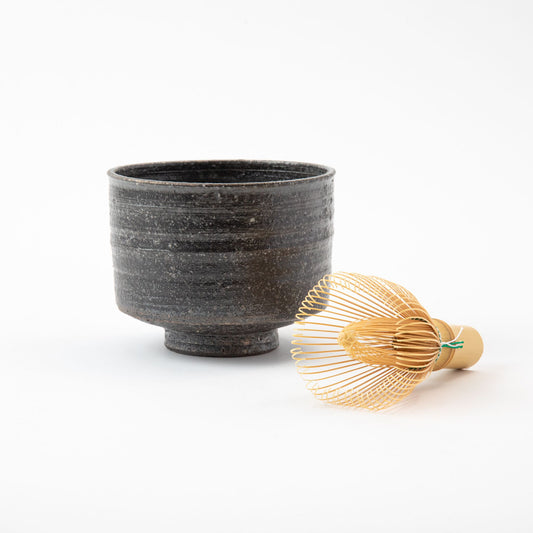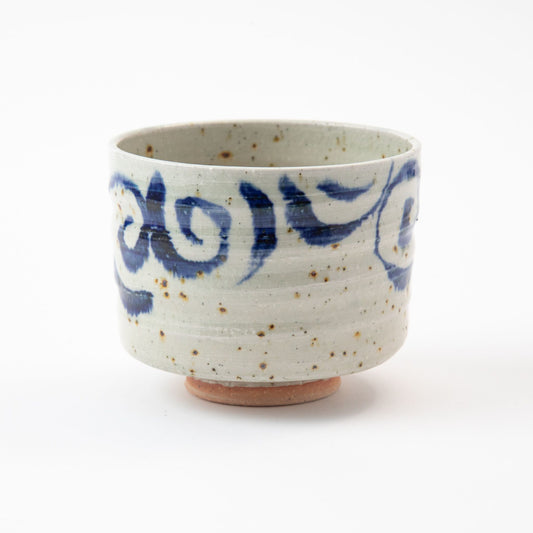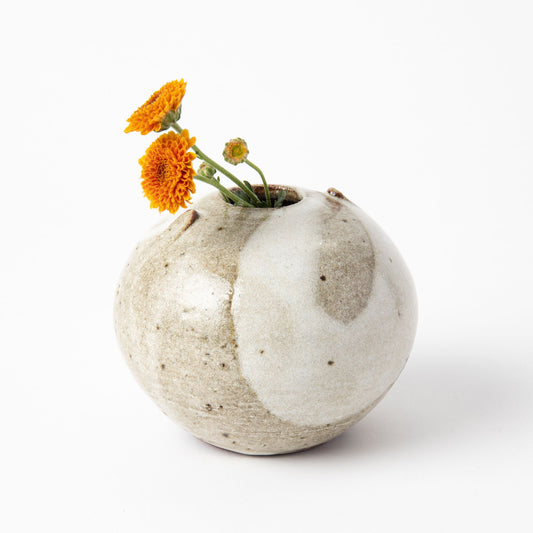For centuries, Shigaraki ware, a captivating form of Japanese pottery originating in the Shiga Prefecture, has captivated enthusiasts with its unique aesthetic. Shigaraki ware transcends simple functionality; it embodies a timeless beauty rooted in the natural world. Unlike its counterparts that strive for flawless form and vibrant color, Shigaraki ware celebrates the inherent beauty of imperfection.
This introductory blog delves into the rich history of Shigaraki ware, exploring its deep connection to the philosophy of wabi-sabi and its potential to elevate your modern home environment. We’ll explore the history of Shigaraki ware, unveil its connection to the concept of wabi-sabi, and discover how these pieces, imbued with rustic charm and timeless elegance, can seamlessly integrate into your modern living space.
Contents
- The History of Shigaraki Ware
- Shigaraki Ware and the Wabi-Sabi Aesthetic
- The Features of Shigaraki Ware
- The Glazes of Shigaraki Ware
- The Versatility of Shigaraki Ware
- Using and Caring for Shigaraki Ware
- Notable Shigaraki Ware Artisans
- In Conclusion
The History of Shigaraki Ware

The captivating story of Shigaraki ware unfolds in the heart of Shiga Prefecture, a region steeped in history and natural beauty. Nestled on the southern shores of Japan's largest freshwater lake, Biwa, Shiga Prefecture boasts fertile valleys brimming with rich clay deposits. Here, amidst this idyllic landscape, skilled artisans have honed their craft for centuries, breathing life into Shigaraki ware. Evidence suggests the origins of Shigaraki ware may date back as far as the 8th century, with the construction of tiles for Emperor Shōmu's Shigaraki-no-miya Palace. However, archaeological discoveries reveal remnants of kilns from the Kamakura and Muromachi periods, solidifying Shiga Prefecture's long-standing connection to pottery production.

Shiga Prefecture's geographical location played a crucial role in the development of Shigaraki ware. Situated along historical trade routes, Shiga became a crossroads for cultural exchange. This exposure likely influenced the early styles of Shigaraki ware, with some scholars suggesting connections to Bizen ware from neighboring Okayama Prefecture. The region's proximity to Kyoto and Nara, where the Japanese tea ceremony flourished, also significantly influenced Shigaraki's evolution. The demand for tea ware spurred the creation of functional yet aesthetically pleasing pieces, further solidifying Shigaraki's place within Japanese ceramics history. Shigaraki ware's earthy elegance and unique aesthetic continue to captivate enthusiasts today, a testament to the enduring legacy of this captivating pottery tradition.
Producing Shigaraki Ware

The production process of Shigaraki ware remains steeped in tradition, with each piece a testament to the potter's skill and artistry. Local clay, known for its earthy tones and natural imperfections, forms the foundation for each creation. Various unique techniques we'll cover more below come into play during the firing process. Here, the pottery is exposed to natural wood ash within the kiln, creating a distinctive glaze infused with subtle variations in color and texture. This organic interaction between fire and ash is a cornerstone of Shigaraki ware's allure.

The resulting aesthetic aligns beautifully with the philosophy of wabi-sabi, embracing the beauty of imperfection and celebrating the inherent characteristics of the natural world. The irregularity of the glaze, the textured surfaces, and the earthy tones all speak volumes about the artistry and the natural world's influence on this captivating pottery tradition.
Shigaraki Ware and the Wabi-Sabi Aesthetic

Wabi-sabi, a cornerstone of Japanese aesthetics, transcends mere visual appeal. This philosophy finds beauty in imperfection, impermanence, and the subtle marks of time. Wabi emphasizes the quiet solitude and unadorned simplicity found in nature, while sabi celebrates the natural aging process and the fleeting beauty of the moment. Think of a weathered wooden table; its cracks and imperfections tell a story of time and use, enhancing its character rather than detracting from it.

The Features of Shigaraki Ware
Shigaraki ware is known for its exceptional fire resistance, thanks in part to its unique clay composition.This makes it ideal for crafting large, thick-walled objects like vases and storage jars.
The firing process itself adds another layer of beauty. During firing, the pottery develops a stunning range of colors, from skin-colored tones to pink and reddish-brown. Shigaraki Ware often features a subtle beadlo glaze or a naturally burnt surface. These elements contribute to a soft, warm aesthetic with a uniquely human touch, something not found in ceramics from other regions.
Fire Color
 One of the most prized features of Shigaraki Ware is its "fire color," a subtle red hue that develops during firing. The exact shade can vary slightly depending on factors like humidity and firing methods, adding an element of surprise and natural variation known as "kiln tastes." This warm, skin-like tone offers a striking contrast to the Shigaraki clay's natural whiteness.
One of the most prized features of Shigaraki Ware is its "fire color," a subtle red hue that develops during firing. The exact shade can vary slightly depending on factors like humidity and firing methods, adding an element of surprise and natural variation known as "kiln tastes." This warm, skin-like tone offers a striking contrast to the Shigaraki clay's natural whiteness.Burnt

In climbing kilns and anagama kilns, the burning firewood leaves behind ash that accumulates within the kiln. If a piece of Shigaraki Ware rests where this ash gathers, it can develop a blackish-brown coloration at the base. This "burnt" appearance, with its rusty hues, is surprisingly desirable in tea ceramics and other prized objects. It adds a touch of rustic charm and highlights the natural processes behind each piece.
Feldspar

Shigaraki clay is renowned for its high quality, containing a significant amount of feldspar. This mineral gives Shigaraki ware its distinctive appearance. Since the clay isn't water-sieved, the coarse feldspar grains remain visible, dissolving during firing to form milky white specks throughout the piece. These specks are a celebrated hallmark of Shigaraki Ware's unique aesthetic and can be found on many rustic vases and pots loved by fans of Shigaraki Ware.
The Glazes of Shigaraki Ware
There are also various types of glazing you may see when collecting Shigaraki Ware. Here are some examples:
Natural Glaze

Shigaraki Ware embraces the natural elements of the firing process to create stunning effects. In climbing kilns and anagama kilns, wood ash accumulates on the pottery's surface. This ash interacts with the feldspar within the clay, melting together to form a beautiful "natural glaze" or "beadlo glaze." This glaze can range from blue-green to yellow-green, adding a subtle, glassy sheen. Sometimes, the ash flows down the pottery, creating streaky patterns called "tamadare." Both the color of the glaze and the streaking patterns are influenced by subtle variations in the firing conditions, making each piece unique.
Oxidation and Reduction

The firing process plays a significant role in determining the final color of Shigaraki Ware. "Oxidation firing" uses a flame with a high oxygen content. This oxygen interacts with the clay and glaze, influencing their final color. In contrast, "reduction firing" uses a flame with limited oxygen, resulting in a distinct color change within the piece. These techniques allow skilled potters to achieve a wide range of colors and effects.
Sea Mouse Glaze

Shigaraki Ware boasts a unique glaze called "sea mouse glaze," named for its resemblance to the translucent white coloration of a sea mouse, a type of marine isopod. This glaze is created using a "double-hanging" technique and is often cloudy white in its base color. Sea mouse glaze is particularly popular for braziers, a product in which Shigaraki held a significant national market share. As a result, this unique glaze became a signature characteristic of Shigaraki Ware.
* Above images courtesy of the Shigaraki Pottery Industry Cooperative Association

This wabi-sabi harmony translates beautifully to a modern home. Earthy Shigaraki plates, with their natural variations in color and texture, create a stunning contrast against a minimalist table setting. The vibrant colors of your meal pop against the grounded backdrop, highlighting the inherent beauty of both the food and the tableware. Shigaraki teacups, each with its unique character, foster a sense of mindfulness during tea ceremonies. Their imperfections encourage one to appreciate the simple act of sharing a beverage and the present moment. Textured Shigaraki bowls add a touch of rustic charm to a clean-lined kitchen, creating a warm and inviting atmosphere that celebrates the connection between nature and human craftsmanship. By incorporating Shigaraki ware into your home, you're not just adding tableware; you're introducing a concept that invites you to embrace imperfection and find beauty in the natural world.
The Versatility of Shigaraki Ware
Shigaraki ware's captivating allure extends far beyond the realm of tableware. While its earthy tones and unique textures bring a touch of rustic elegance to teacups, plates, and bowls, the artistry extends to a wider array of functional and decorative pieces. Vases, crafted from the same natural clay and adorned with the various signature glazes, offer a stunning canvas for showcasing floral arrangements. The irregularity of the surface and the subtle color variations create a captivating interplay with the vibrant hues and delicate textures of flowers, adding a touch of wabi-sabi charm to any display.

Similarly, ikebana flower holders, specifically designed for the traditional Japanese art of flower arrangement, embody the perfect marriage of form and function. Their understated elegance allows the beauty of the flowers themselves to take center stage, while the unique characteristics of the Shigaraki ware complement the natural elements of the arrangement.
Using and Caring for Shigaraki Ware
Renowned for its rustic charm and exceptional durability, Shigaraki ware can be enjoyed for generations to come, but proper care is key to ensuring its timeless beauty. Thankfully, maintaining the functionality and aesthetics of your Shigaraki ware collection is a surprisingly simple process.
- Gentle Cleansing for Everyday Use: Many Shigaraki ware pieces, particularly plates and bowls intended for daily use, are dishwasher-safe on a gentle cycle with mild detergent. However, to ensure optimal longevity, always consult the manufacturer's instructions for specific care recommendations. If handwashing is preferred, opt for warm water, a soft sponge, and a gentle dish soap. Abrasive cleaners and scouring pads should be strictly avoided, as they can damage the unique surface of the pottery.
- Thorough Rinsing and Drying: After washing, thoroughly rinse your Shigaraki ware to remove any residual soap residue. Following this, use a soft, clean cloth to completely dry each piece. This prevents the formation of water spots and maintains the pottery's vibrant aesthetics.
- Displaying with Care: Whether you choose a dedicated curio cabinet for safekeeping and dust-free display, or a decorative stand to showcase a single treasured item, consideration should be given to the environment. Shigaraki ware beautifully complements a minimalist tablescape, adding a touch of rustic elegance to your dining space.
- Avoid Direct Sunlight: Where possible avoid storing Shigaraki ware in direct sunlight, as prolonged exposure can cause colors to fade.
By following these simple yet effective steps, you'll ensure each piece is cared for long enough to be transformed from a treasured possession into a cherished heirloom.
Notable Shigaraki Ware Artisans
Shigaraki Ware's influence extends far beyond its artistic value - it's a reflection of the dedicated craftsmen who have worked tirelessly to preserve and innovate this tradition. Through the years, families have shared the expertise and craftsmanship required to produce these exceptional pieces.
Some of the renowned Shigaraki Ware featured here on omakase include:
- Yamasho Pottery: Across an impressive journey spanning eight decades, Yamasho Pottery has fervently embraced the art of producing exquisite ceramics, seamlessly adjusting their creations to suit the ever-changing needs of the era. Their Shigaraki Ware adds a unique touch of color to the usually grounded, earthy tones, providing a different experience to that purely rustic look.
- HECHIMON: HECHIMON is dedicated to creating vases that capture the essence of nature in its purest form. Each piece they craft is a testament to simplicity and authenticity. Their remarkable Shigaraki Ware showcases the beauty found in diversity and imperfections, inviting you to embrace the comforting warmth that only handmade craftsmanship can provide.
These examples provided are just a small sample, as other skilled artisans continue to create stunning Shigaraki Ware pieces. You may also be able to discover workshops that offer visitors the opportunity to personally witness the production process of Shigaraki Ware, providing them with a glimpse into the immense dedication and artistic talent involved.
In Conclusion
In conclusion, Shigaraki ware offers a unique opportunity to bring a slice of Japanese history and artistry into your everyday life. From the earthy elegance of its design to the wabi-sabi philosophy it embodies, Shigaraki ware transcends mere functionality. It becomes a conversation starter, a connection to the past, and a testament to the enduring beauty of imperfection.
Whether enjoyed as tableware or displayed as decorative pieces, Shigaraki ware invites you to slow down, appreciate the handcrafted nature of each object, and find beauty in the natural world. So, embark on your journey into the captivating world of Shigaraki ware. Embrace its rustic charm, celebrate its imperfections, and allow it to weave a touch of timeless elegance into your home.




















